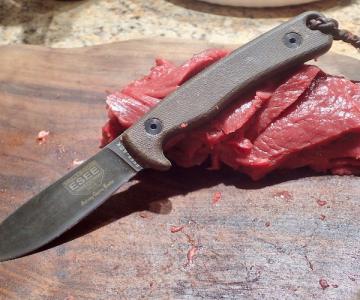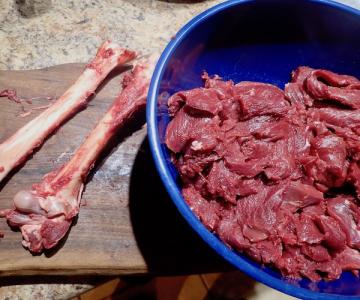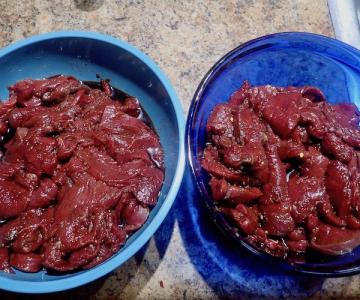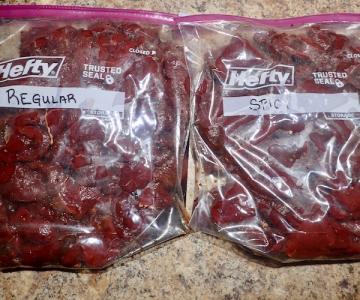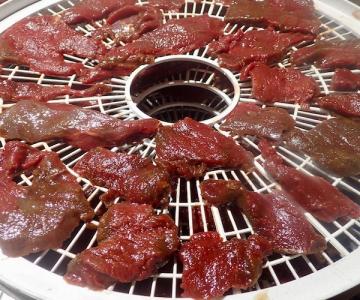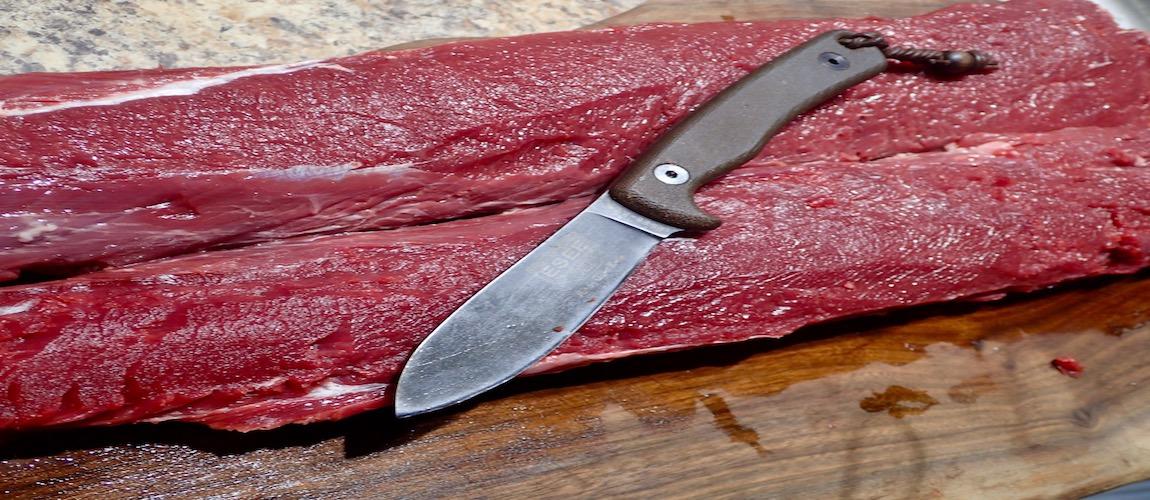
By Patrick Rollins
If you are anything like me, you love jerky but hate paying a lot of money for it. A good solution for this is to make your own. Dehydrators are fairly inexpensive and can provide plenty of snacks/food for the trail. Or you can simply make the jerky in your oven! Here is a quick rundown of how I made several batches of deer jerky recently.
I decided to make the most use of a freshly killed doe by doing it all myself. I always wonder what percentage of meat do you get back from the processor, and what percentage of that meat is actually yours? First, I field dressed, skinned, and quartered the deer using an Ashley Game Knife. The meat was placed in coolers in the shade of the back porch and I knew this was going to be a lengthy process.
The most prized cuts on many animals are the tenderloins and backstraps, so they were used first. If you are lucky enough to have a wife who doesn’t mind you occasionally cleaning animals in the kitchen, it makes the job a lot simpler. I rinsed them off and made sure to remove any fat. Deer fat is waxier in nature and doesn’t taste as good as pork or beef fat. Also, be sure to remove any of the “silver-skin” or connective tissue. If you try to skip this time-consuming step it makes for some very chewy jerky. Now cutting across the grain as much as possible, cut the meat into thin strips. I prefer to keep them no thicker than 1/2”. This takes a while, so make sure you have plenty of time to devote to it before starting.
I have a six-tray dehydrator and know that it will only hold one mixing bowl of meat at a time. So, once the bowl was full it was time to start that batch marinating. When it comes to recipes there is usually a lot of trial and error. Search the web, find one that sounds good, and give it a shot. For this particular batch, I used two separate homemade marinades, one mild and one spicy. The meat is mixed in by hand and thoroughly coated before being poured into large Ziploc bags. Refrigerate overnight and space evenly on the trays. I try to leave gaps between the pieces to allow good airflow. Now it becomes a very good smelling waiting game. Times will vary depending on the dehydrator, amount of meat, and how dry you like it. I prefer it very dry so it will keep longer.
Well, there you have it. In addition to the great jerky, I will brain tan the hide and the hooves and several bones will be used for classes/projects. If you don’t hunt but still wanted to give it a try, pickup up some beef from the grocery store. It’s great also!



